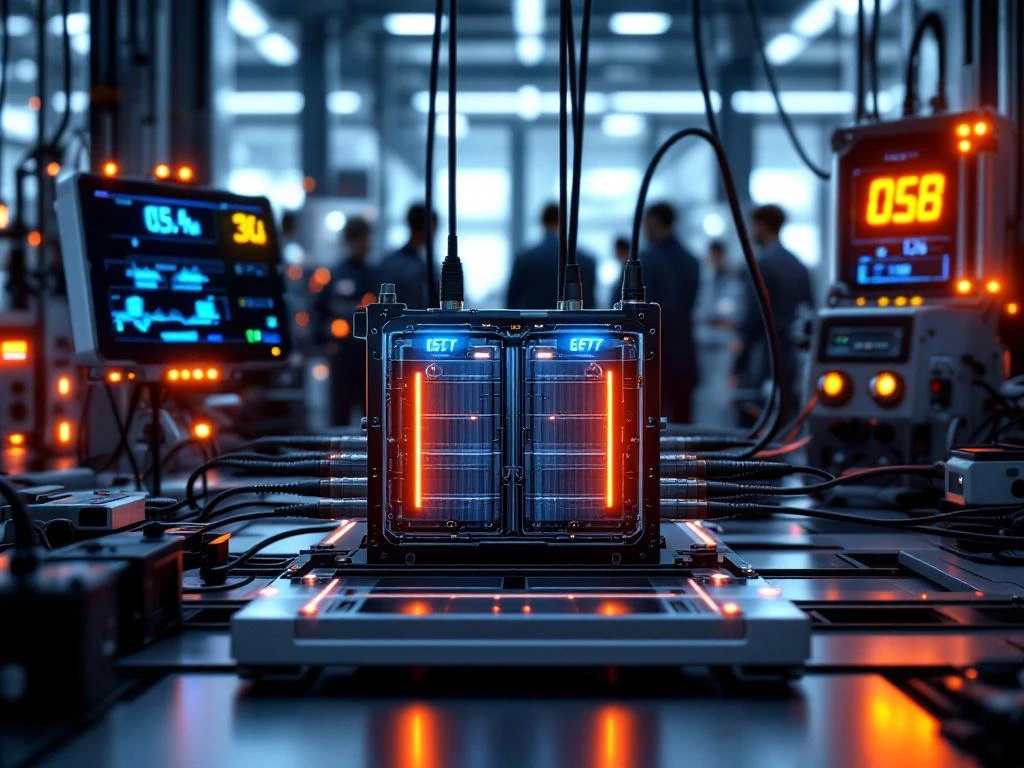When it comes to high-performance racing applications, every component must deliver absolute reliability under extreme conditions. Your custom modular energy storage systems face unique challenges, from intense heat generated during rapid acceleration to the demanding thermal environments of racing circuits. One critical concern that can’t be overlooked is thermal runaway protection – a potentially catastrophic failure mode that can compromise both performance and safety.
Thermal runaway occurs when a battery cell generates heat faster than it can dissipate it, creating a dangerous chain reaction that can spread throughout your entire energy storage system. For Formula racing teams and sports car retrofits, understanding and implementing proper thermal runaway protection isn’t just about safety – it’s about protecting your investment and ensuring consistent performance when every millisecond counts.
Understanding thermal runaway risks in modern battery systems
Thermal runaway represents one of the most serious safety concerns in lithium-ion battery technology. This phenomenon occurs when a battery cell’s internal temperature rises beyond its thermal stability threshold, triggering an exothermic reaction that generates even more heat. The process becomes self-sustaining, with temperatures potentially reaching over 800°C within minutes.
In racing applications, several factors can trigger thermal runaway events. Physical damage from vibration or impact, electrical abuse through overcharging or short circuits, and extreme operating temperatures all pose significant risks. The high-current demands of racing applications place additional stress on cells, making battery thermal management absolutely crucial for maintaining safe operation.
Custom modular energy storage systems face unique challenges because they often operate at the limits of their design parameters. Unlike consumer applications, racing batteries must deliver maximum power output whilst withstanding harsh environmental conditions, making comprehensive thermal runaway protection essential for both safety and performance reliability.
1. Implement advanced battery management systems (BMS)
A sophisticated battery management system serves as the brain of your energy storage system, continuously monitoring critical parameters that could indicate impending thermal runaway conditions. Modern BMS technology tracks individual cell temperatures, voltages, and current flows with remarkable precision, enabling early detection of potentially dangerous situations before they escalate.
Advanced BMS units incorporate predictive algorithms that analyse patterns in cell behaviour, identifying subtle changes that might indicate degradation or abuse conditions. These systems can automatically implement protective measures, such as reducing charge rates or disconnecting problematic cells, to prevent thermal runaway from occurring. For racing applications, this real-time monitoring capability is invaluable for maintaining lithium battery safety under demanding conditions.
The most effective BMS solutions also provide comprehensive data logging capabilities, allowing teams to analyse battery performance over time and identify potential issues before they become critical. This proactive approach to battery safety enables continuous optimisation of your energy storage system’s performance whilst maintaining the highest safety standards.
2. Design effective thermal management solutions
Proper thermal management forms the foundation of any robust thermal runaway protection strategy. Air-cooled systems utilise forced convection to remove heat from battery cells, whilst liquid-cooled solutions offer superior heat removal capacity for high-performance applications. The choice between these approaches depends on your specific power requirements and operating environment.
Liquid cooling systems typically provide more precise temperature control, maintaining cells within optimal operating ranges even under extreme conditions. These systems can incorporate dedicated coolant loops with heat exchangers, pumps, and temperature sensors to create a comprehensive battery cooling system that responds dynamically to changing thermal loads.
For racing applications, hybrid cooling approaches often prove most effective, combining passive thermal management through strategic cell placement with active cooling systems that engage during high-demand periods. This layered approach ensures consistent thermal performance whilst minimising weight and complexity – critical considerations for competitive applications. Understanding how cooling prevents overheating is essential for implementing effective thermal management strategies.
3. Select high-quality cell chemistry and materials
Different lithium-ion cell chemistries exhibit varying degrees of thermal stability, making material selection a crucial factor in thermal runaway protection. Lithium iron phosphate (LiFePO4) cells offer exceptional thermal stability but may not provide the energy density required for racing applications. Conversely, high-energy chemistries like NMC or NCA require more sophisticated thermal management but deliver superior performance characteristics.
The quality of cell manufacturing also significantly impacts thermal runaway resistance. Premium cells feature robust separators, stable electrolytes, and consistent manufacturing tolerances that reduce the likelihood of internal failures. When designing custom battery packs for racing applications, investing in high-quality cells from reputable manufacturers provides a fundamental layer of safety protection.
Cell selection must also consider the specific operating conditions your energy storage system will encounter. Cells designed for high-rate discharge applications typically incorporate enhanced thermal management features and more robust construction, making them better suited for the demanding requirements of racing environments.
4. Establish proper cell spacing and pack design
Strategic mechanical design plays a vital role in preventing thermal runaway propagation throughout your battery pack. Adequate spacing between cells allows for proper heat dissipation whilst reducing the risk of thermal conduction between adjacent cells. This spacing must be carefully balanced against the need to minimise overall pack size and weight.
Thermal barriers between cells provide an additional layer of protection, preventing heat transfer during thermal events. These barriers can incorporate fire-resistant materials that maintain their integrity even at elevated temperatures, effectively compartmentalising thermal runaway events to prevent cascade failures throughout the pack.
Pack architecture should also consider access for thermal management systems, ensuring that cooling airflow or liquid coolant can reach all cells effectively. This might involve strategic placement of cooling channels, thermal interface materials, or heat sinks to optimise thermal performance across the entire energy storage system.
5. Install temperature monitoring and safety systems
Comprehensive temperature monitoring requires strategic sensor placement throughout your battery pack to detect thermal anomalies before they become dangerous. Multiple temperature sensors per module provide redundancy and enable precise localisation of thermal events, allowing for targeted protective responses.
Automated safety protocols should trigger immediately when temperature thresholds are exceeded. These might include reducing charge or discharge rates, activating enhanced cooling systems, or completely isolating affected sections of the battery pack. The key is implementing these responses quickly enough to prevent thermal runaway from becoming established.
Modern safety systems also incorporate communication protocols that alert operators to potential issues, enabling manual intervention when appropriate. For racing applications, this real-time feedback allows teams to make informed decisions about continuing operation or implementing additional protective measures based on current conditions.
6. What role do thermal barriers play in protection?
Thermal barriers serve as critical firebreaks within your battery pack, containing thermal runaway events and preventing their spread to adjacent cells. These barriers must maintain their protective properties even when exposed to the extreme temperatures generated during thermal runaway, requiring careful material selection and design consideration.
Effective thermal barriers often incorporate multiple layers of protection, including thermal insulation materials, fire-resistant coatings, and structural elements that maintain pack integrity during thermal events. Some advanced designs include phase-change materials that absorb large amounts of heat during thermal events, providing additional protection time for safety systems to respond.
The placement and design of thermal barriers must be integrated into the overall pack architecture from the beginning of the design process. Retrofitting thermal barriers into existing designs often proves less effective than incorporating them as fundamental design elements that work in harmony with other thermal management systems.
7. Maintain optimal charging and operating parameters
Careful control of charging protocols significantly reduces thermal runaway risk by minimising thermal and electrical stress on battery cells. This includes implementing appropriate voltage limits, current thresholds, and charging rates that respect the thermal characteristics of your specific cell chemistry and pack design.
Operating temperature ranges must be strictly maintained to prevent cells from entering thermally unstable regions. This requires coordination between your BMS, thermal management systems, and operational procedures to ensure that industrial batteries remain within safe operating parameters even under demanding conditions.
Charging strategies should also consider the thermal state of the battery pack, potentially reducing charging rates when cells are already at elevated temperatures. This adaptive approach helps prevent the accumulation of thermal stress that could eventually lead to thermal runaway conditions.
8. Develop comprehensive testing and validation procedures
Rigorous testing protocols verify that your thermal runaway protection systems will perform effectively when needed. Thermal abuse testing simulates various failure modes to ensure that protective systems respond appropriately and that thermal barriers contain thermal events as designed.
Validation procedures should encompass both individual component testing and full system-level evaluation. This comprehensive approach ensures that all elements of your thermal runaway protection strategy work together effectively, providing reliable protection under real-world operating conditions.
Regular testing throughout the operational life of your energy storage system helps identify degradation or changes in thermal behaviour that might compromise safety. This ongoing validation approach enables proactive maintenance and system updates to maintain optimal protection levels over time.
Protecting your investment through proper thermal management
Implementing comprehensive thermal runaway protection requires a systematic approach that addresses every aspect of your energy storage system design and operation. From selecting appropriate cell chemistries and implementing sophisticated battery management systems to designing effective thermal barriers and maintaining optimal operating parameters, each element contributes to overall system safety and reliability.
The investment in proper thermal runaway protection pays dividends in both safety and performance, ensuring that your custom modular energy storage systems can deliver consistent results under the demanding conditions of racing applications. By taking a proactive approach to battery safety, you’re not just protecting your equipment – you’re ensuring that your team can focus on performance with confidence in your energy storage systems.
As thermal runaway protection technologies continue to evolve, staying informed about the latest developments and best practices becomes increasingly important. Effective temperature management systems are crucial for preventing thermal runaway by maintaining optimal operating temperatures and removing excess heat before dangerous conditions develop. If you’re looking to implement or upgrade thermal runaway protection in your energy storage systems, we’d be happy to discuss how our expertise can help ensure your batteries deliver both the performance and safety your applications demand. Please don’t hesitate to contact us to explore how we can support your specific requirements.


